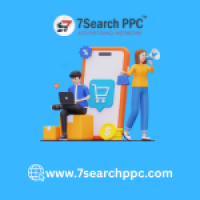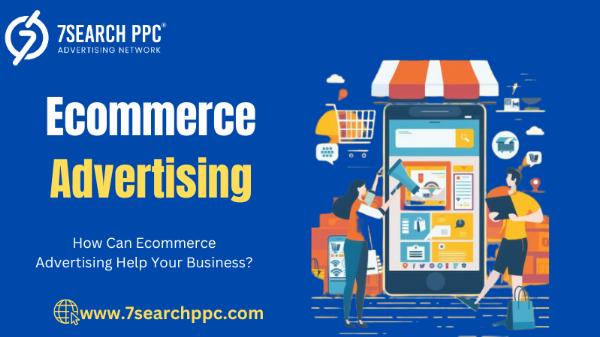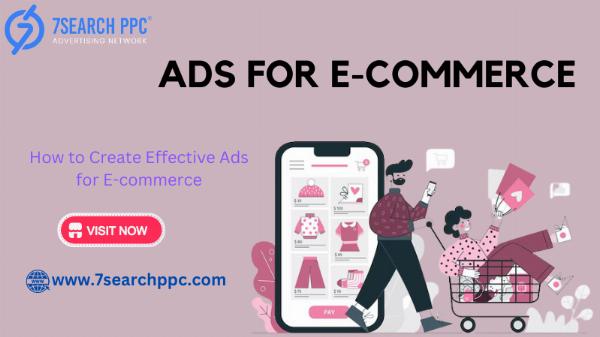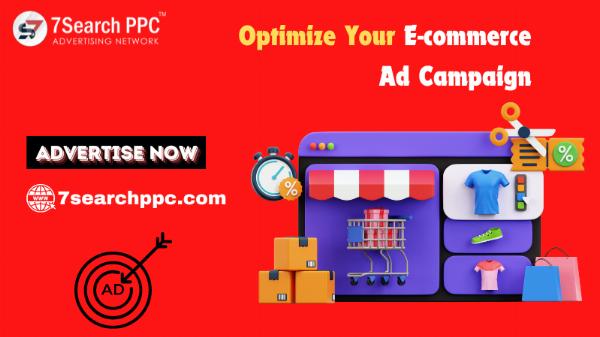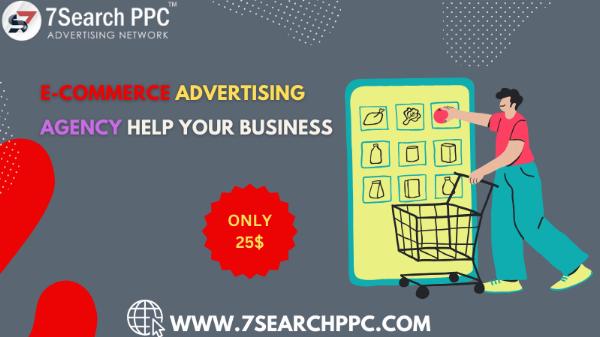How Do You Measure the ROI of E-Commerce PPC?
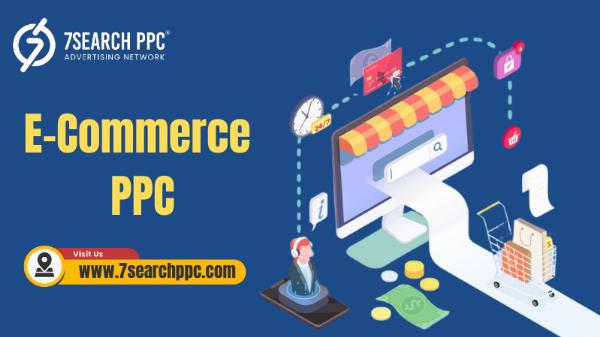
Strong 8k brings an ultra-HD IPTV experience to your living room and your pocket.
In the competitive world of e-commerce, one of the most important metrics to track is the Return on Investment (ROI) of your marketing efforts. ROI helps you determine the profitability of the investments you make in Pay-Per-Click (PPC) campaigns, specifically in the e-commerce space. E-commerce PPC advertising can be a powerful way to drive traffic and boost sales, but to ensure success, it’s essential to understand how to measure and optimize ROI effectively.
This article will explore various strategies to measure and maximize the ROI of E-Commerce PPC campaigns, with a focus on metrics, tools, and optimization techniques. By the end, you'll have a comprehensive understanding of how to use your ad spend wisely and achieve profitable results through PPC.
Understanding E-Commerce PPC
E-commerce PPC refers to paid advertising strategies used to drive traffic to e-commerce websites, typically through platforms like Google Ads, Bing Ads, or social media networks. Advertisers bid on keywords related to their products, and every time someone clicks on the ad, the advertiser pays a fee. Ideally, these clicks lead to sales, and the goal is to ensure the revenue from those sales outweighs the ad costs, resulting in a positive ROI.
Benefits of E-Commerce PPC
- Targeted Advertising: With PPC for e-commerce, you can target specific keywords and demographics to reach customers most likely to buy your products.
- Immediate Results: Unlike SEO, which takes time to deliver results, PPC delivers immediate visibility and can quickly drive traffic and sales.
- Budget Control: PPC campaigns allow you to set budgets, ensuring you don’t overspend.
But how do you know if your E-commerce PPC campaigns are working? That’s where measuring ROI comes into play.
Key Metrics to Measure ROI in E-Commerce PPC
To calculate the ROI of your PPC campaigns, you need to track and analyze several key performance indicators (KPIs). The goal is to compare the revenue generated from your ads to the amount you’re spending. Here are the key metrics you should monitor:
Cost-per-click (CPC)
CPC is the amount you pay every time someone clicks on your PPC ad. While the CPC will vary based on factors like competition and the quality of your ad, it’s crucial to keep this cost as low as possible without sacrificing the quality of your traffic.
Conversion Rate (CR)
Conversion rate refers to the percentage of people who take the desired action after clicking on your ad, whether it’s making a purchase, signing up for a newsletter, or downloading an app. For e-commerce businesses, this usually means sales. A higher conversion rate means your ads are bringing in quality traffic that is more likely to convert into paying customers.
Customer Lifetime Value (CLV)
CLV is the total revenue you can expect from a customer over their lifetime. Understanding the long-term value of your customers helps you determine how much you can afford to spend on PPC ads to acquire new ones. If you have a high CLV, you can justify spending more on ads for customer acquisition.
Return on Ad Spend (ROAS)
ROAS is a critical metric for e-commerce businesses. It’s calculated by dividing the revenue generated by your ads by the amount spent on those ads. For example, if you spend $1,000 on ads and generate $5,000 in sales, your ROAS is 5:1, or $5 for every $1 spent.
Click-Through Rate (CTR)
CTR measures the percentage of people who click on your ad after seeing it. A high CTR means your ads are appealing to the right audience, whereas a low CTR indicates that your ads may need improvement in terms of targeting or design.
Cost Per Acquisition (CPA)
CPA measures how much it costs to acquire a new customer through your PPC campaign. The lower your CPA, the more profitable your campaign is. CPA is calculated by dividing the total cost of the campaign by the number of conversions.
Average Order Value (AOV)
AOV is the average amount of money spent each time a customer places an order. By increasing your AOV, you can improve your overall ROI, even if your ad spend remains the same.
Steps to Measure the ROI of E-Commerce PPC Campaigns
Once you have a firm understanding of the key metrics, it’s time to start measuring your ROI. Here's a step-by-step process:
Set Clear Goals
Before you can measure ROI, you need to define what success looks like. Is your goal to increase sales, boost your website traffic, or raise brand awareness? Defining specific goals allows you to measure whether your PPC campaign is effective.
Track the Right Metrics
Use tools like Google Analytics, Google Ads, and other third-party software to track the KPIs mentioned earlier. Ensure you’re tracking conversions, revenue, and the costs associated with your campaigns.
Calculate ROI
The basic formula to calculate ROI is:
ROI=Revenue−Ad SpendAd Spend×100\text{ROI} = \frac{\text{Revenue} - \text{Ad Spend}}{\text{Ad Spend}} \times 100ROI=Ad SpendRevenue−Ad Spend×100
For example, if you spent $2,000 on an e-commerce PPC campaign and generated $6,000 in revenue, your ROI would be:
ROI=6,000−2,0002,000×100=200%\text{ROI} = \frac{6,000 - 2,000}{2,000} \times 100 = 200\%ROI=2,0006,000−2,000×100=200%
Analyze Campaign Performance
Use the data you’ve gathered to analyze the performance of your campaign. If your ROI is positive, your campaign is profitable. If it’s negative, you’ll need to look for ways to optimize your ads, landing pages, or targeting.
Optimize for Better ROI
To maximize ROI, continuously test and optimize your campaigns. Try experimenting with different ad copy, landing pages, keywords, and bid strategies to see what performs best. For example, consider using Display Ads for E-Commerce to increase brand awareness, or refining your targeting to reduce wasted clicks.
Improving the ROI of PPC for E-Commerce
Once you know how to measure your ROI, the next step is improving it. Here are some tips for getting the most out of your PPC for e-commerce:
Leverage Remarketing
Remarketing allows you to target users who have previously visited your website but didn’t make a purchase. These customers are often more likely to convert because they’re already familiar with your brand and products.
Optimize Product Listings
Ensure that your product listings are optimized for both organic search and PPC. High-quality images, detailed descriptions, and competitive pricing can all help improve conversion rates and boost your ROI.
Use Dynamic Ads
Dynamic ads automatically show users products they’ve shown interest in, whether it’s through browsing or cart abandonment. These ads can help recover lost sales and increase conversions.
Focus on High-Intent Keywords
Not all keywords are created equal. Focus your PPC efforts on high-intent keywords that indicate a user is ready to make a purchase. This will help you get the most out of your ad spend.
Test and Adjust Bids
Adjust your bidding strategy based on performance. You may find that bidding higher for certain keywords yields better results while lowering bids on underperforming ads helps reduce wasted spend.
Conclusion
Measuring and improving the ROI of your e-commerce PPC campaigns is crucial for maximizing the effectiveness of your marketing budget. By focusing on the right metrics, setting clear goals, and continuously optimizing your campaigns, you can ensure that your PPC efforts drive meaningful results for your e-commerce business. Display ads, retargeting, and dynamic ads can all be valuable tools in increasing your ROI. Keep tracking, testing, and adjusting, and you can turn your PPC campaigns into profit-generating machines.
FAQs
What is a good ROI for E-Commerce PPC?
Ans. A good ROI depends on your industry and business model, but most e-commerce companies aim for an ROI of 3:1 or higher, meaning $3 in revenue for every $1 spent on ads.
How can I lower my CPA in E-Commerce PPC campaigns?
Ans. To lower your CPA, you can improve ad targeting, optimize your landing pages, use remarketing strategies, and focus on high-converting keywords.
What are Display Ads for E-Commerce?
Ans. Display ads are visual ads that appear on websites, social media platforms, and apps. They can help increase brand awareness and drive traffic to your e-commerce store.
How does PPC for E-Commerce differ from traditional PPC?
Ans. PPC for e-commerce is often focused on direct sales and product-specific ads, while traditional PPC can be broader and may target brand awareness or lead generation.
What tools can I use to measure the ROI of my PPC campaigns?
Ans. Google Analytics, Google Ads, and third-party software like SEMrush or HubSpot are excellent tools for tracking PPC performance and calculating ROI.
Note: IndiBlogHub features both user-submitted and editorial content. We do not verify third-party contributions. Read our Disclaimer and Privacy Policyfor details.

